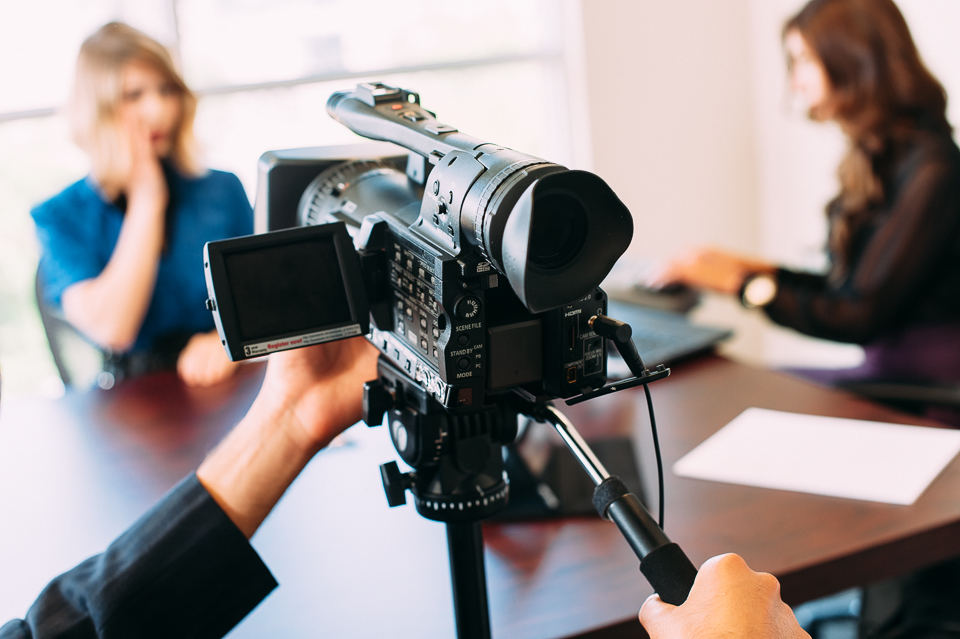Why Lawful Videography Is Crucial for Accurate Court Recordings
The duty of lawful videography in court setups can not be overstated, as it serves as an essential tool for preserving the stability of court records. By capturing both spoken and non-verbal interaction, it boosts the clarity of witness testaments and mirrors the subtleties of court room interactions. This detailed paperwork not just help in decreasing prospective misunderstandings but additionally supports appellate testimonials, consequently reinforcing the judicial process. The effects of integrating legal videography into conventional court techniques raise vital concerns about its more comprehensive effect on the legal system. What might these ramifications entail?
Relevance of Visual Evidence
In the realm of lawful process, the value of aesthetic proof can not be overstated. Aesthetic evidence acts as a powerful tool in developing realities, proving testaments, and enhancing the total quality of a situation. This type of proof, that includes photos, video clips, and layouts, can offer a concrete context that verbal summaries frequently lack, thus providing courts and courts a more clear understanding of the situations bordering a situation.
In addition, visual evidence aids in the retention of info. Human cognition is inherently visual, and individuals are more probable to keep in mind and comprehend details offered in an aesthetic style. In the court room, this can be vital, as engaging visual evidence can persuade viewpoints and enhance the story provided by legal agents.
Furthermore, using visual proof can decrease misconceptions and uncertainties that often arise from verbal exchanges. By offering a direct representation of events, aesthetic evidence assists to eliminate subjective interpretations and promotes a more objective assessment of the truths. Subsequently, the integration of aesthetic proof right into legal proceedings not just enhances the stability of the judicial procedure yet additionally enhances the possibility of achieving a just outcome.
Capturing Non-Verbal Hints
Using advanced videography strategies can dramatically improve the capture of non-verbal signs during legal procedures. Non-verbal interaction, including face expressions, body language, and eye contact, plays a vital duty in conveying emotions and intentions that might not be clearly stated in spoken statement. legal videography. Legal videography utilizes high-definition cams and tactical angles to make certain that these refined signs are tape-recorded with clearness and precision
The capacity to evaluate non-verbal actions can supply useful context to declarations made throughout court sessions. For circumstances, a witness's reluctance or confidence can be analyzed through their stance or motions, possibly affecting the jury's perception of trustworthiness. Additionally, making use of close-up shots can aid concentrate on a speaker's expressions, enabling a more nuanced understanding of the statement.
In addition, incorporating numerous video camera angles can create a thorough sight of communications, highlighting characteristics between celebrations included. This complex strategy not just boosts the accuracy of the court record but also aids in maintaining the honesty of the judicial procedure - legal videography. Eventually, catching non-verbal signs through legal videography fosters a richer, a lot more total representation of court room procedures

Enhancing Testimony Integrity
The dependability of testimony can be substantially boosted via the use of high-quality lawful videography. Video clip recordings act as an objective tool that captures not just the spoken words of witnesses yet likewise the nuances of their delivery, consisting of tone, pacing, and emotional expressiveness. This diverse paperwork gives a more clear understanding of the witness's trustworthiness and objectives, which can be pivotal in lawful proceedings.
Moreover, legal videography lessens the potential for misconceptions that might occur from created records alone. When jurors can observe a witness's temperament and body movement combined with their testament, they are better furnished to examine the authenticity and reliability of the proof offered. This aesthetic context can reinforce the testimonial story, making it more engaging and trustworthy.
In addition, the presence of a video clip recording can hinder prospective variances in testament. Witnesses may be a lot more mindful in their statements when they know they are being taped, bring about even more precise and truthful accounts. Generally, top notch lawful videography enhances the honesty of testimony, Website making sure that the court has access to a complete and truthful representation of the realities as conveyed by the witnesses.
Supporting Appeals and Reviews
Lawful videography plays an important duty in supporting allures and reviews by supplying a Full Article thorough aesthetic document of court room procedures. This visual documents captures not only the spoken words of witnesses and attorneys yet likewise the nuances of body language, intonation, and court characteristics. Such aspects can be pivotal in recognizing the context of statements and disagreements provided.
In the appellate procedure, where the focus gets on mistakes of regulation and step-by-step fairness, a video clip record can serve as an essential tool for appellate courts. It allows courts to review the initial test context, guaranteeing that choices are based upon a full understanding of the proceedings. The capability to aesthetically evaluate the attitude of witnesses or the interactions in between celebrations can disclose understandings that composed transcripts may overlook.

Additionally, lawful videography can help in clearing up uncertainties in testaments or step-by-step rulings, thus strengthening the basis for an appeal. By providing a dependable, unbiased account of what taken place in court, lawful videography not just supports the integrity of the lawful process however additionally encourages all parties included to make educated decisions concerning their cases.
Streamlining Court Room Procedures
Enhancing court room performance, lawful videography simplifies procedures by offering instant accessibility to aesthetic documents of process. This innovation permits courts, attorneys, and juries to review essential testimony and evidence, making certain that all celebrations have a clear understanding of the case. By recording the nuances of verbal and non-verbal interaction, videography enhances the document, making it less complicated to grasp the context and weight of statements.

In addition, video recordings can assist in remote involvement in hearings, permitting greater adaptability in organizing and involvement, which is especially valuable in complicated situations including several stakeholders.
Conclusion
To conclude, lawful videography plays an essential function in making certain exact court recordings helpful hints by giving necessary visual evidence that captures both verbal and non-verbal communication. This practice improves the dependability of testimonies, sustains appellate evaluations, and simplifies courtroom procedures. By cultivating an extensive understanding of courtroom dynamics, legal videography eventually adds to more fair judicial outcomes, strengthening the honesty of the lawful system and facilitating informed decision-making.